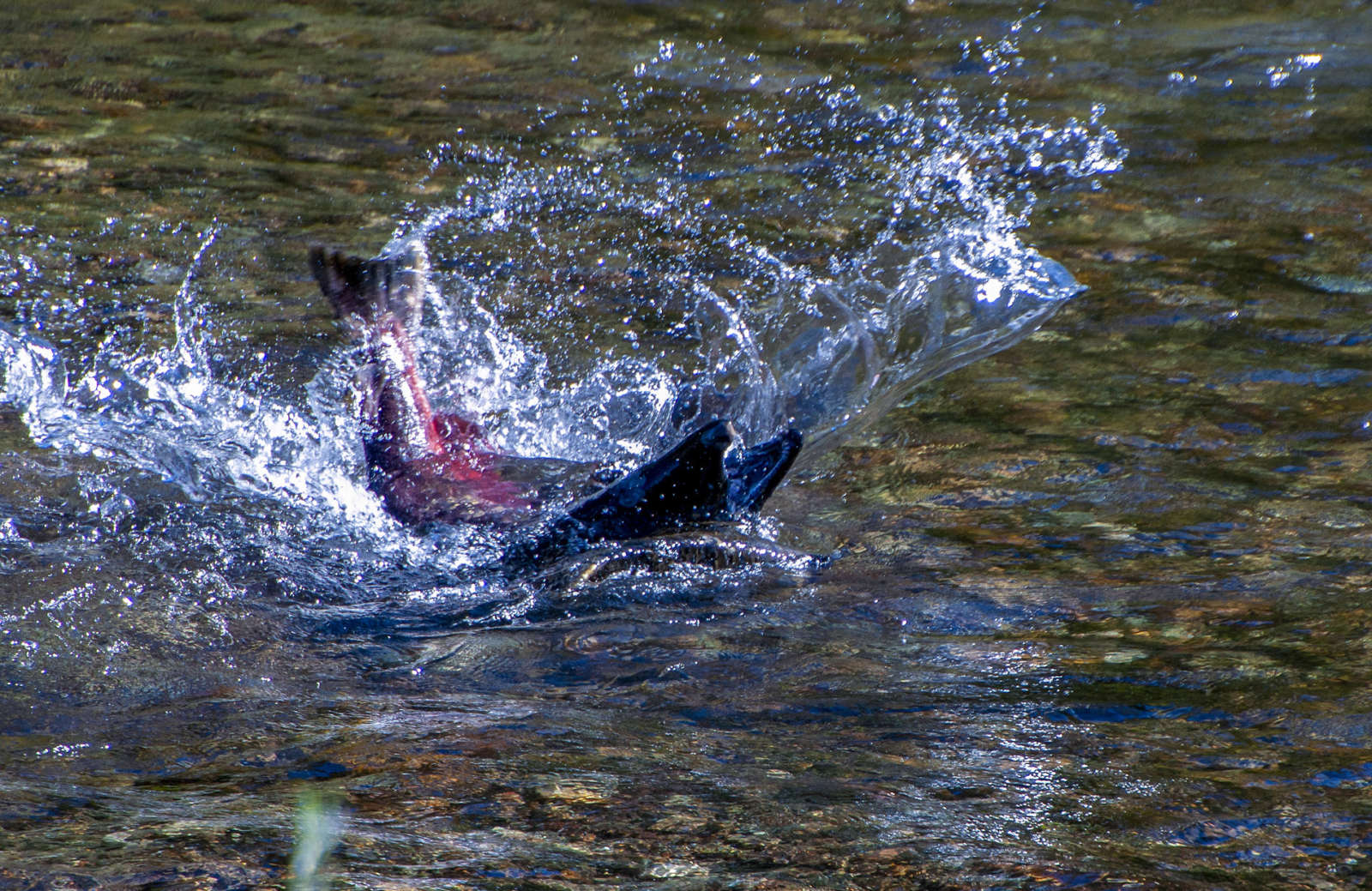The Bureau of Reclamation, NOAA Fisheries, and U.S. Fish and Wildlife Service this week implemented an emergency pulse flow release in northern California from Whiskeytown Dam into Clear Creek to benefit Central Valley spring-run Chinook salmon.
Pulse flows are rapid increases in dam-released flows occurring over a short time frame. During pulse flows, water levels are higher and currents are faster.
Flow releases from Whiskeytown Dam (near Redding) began overnight on June 20 and reached a peak of 500 cubic feet per second June 22.Flow releases were reduced to 150 cfs by June 24.
This emergency pulse flow aims to encourage threatened Central Valley spring-run Chinook salmon to move upstream to take advantage of cooler summer water temperatures and more suitable habitat. This emergency pulse flow is consistent with the Bureau of Reclamation’s 2019 Proposed Action and U.S. Fish and Wildlife Service’s and NOAA Fisheries’ Biological Opinions for the Coordinated Long-Term Operation of the Central Valley Project and State Water Project, which allow operational flexibility in critically dry water years.
This pulse flow requires no additional stored water beyond normal operations. Reclamation and partner agencies coordinated this operational adjustment by reducing base flow in preparation for this pulse flow release when most needed by spring-run Chinook salmon.
Clear Creek, a Sacramento River tributary, was first ravaged by gold-seekers and then by gravel-miners.
Thirty years ago there was little water flowing, and Saeltzer Dam closed off more than 11 miles of potential habitat for sensitive species like Central Valley steelhead and spring-run Chinook salmon.
The Bureau of Land Management, however, acquired most of the Lower Clear Creek channel bottom in a series of deals in the 1990s.
In 1992, Congress passed a massive fish and wildlife restoration program for California, the Central Valley Project Improvement Act. Among other measures, it singled out Clear Creek for an overhaul to be funded jointly with the state.
The planning process involved a large group of landowners, stakeholders, consultants and agency experts, which delivered a multi-pronged approach. The plan would reconfigure part of the creek channel, raise the water level, open up areas for fish habitat and increase the stream’s complexity and food production.
Restoration began by increasing water flows through Reclamation’s Whiskeytown Dam, then removing the privately-owned Saeltzer Dam. Those steps brought fish to Clear Creek in the thousands.

